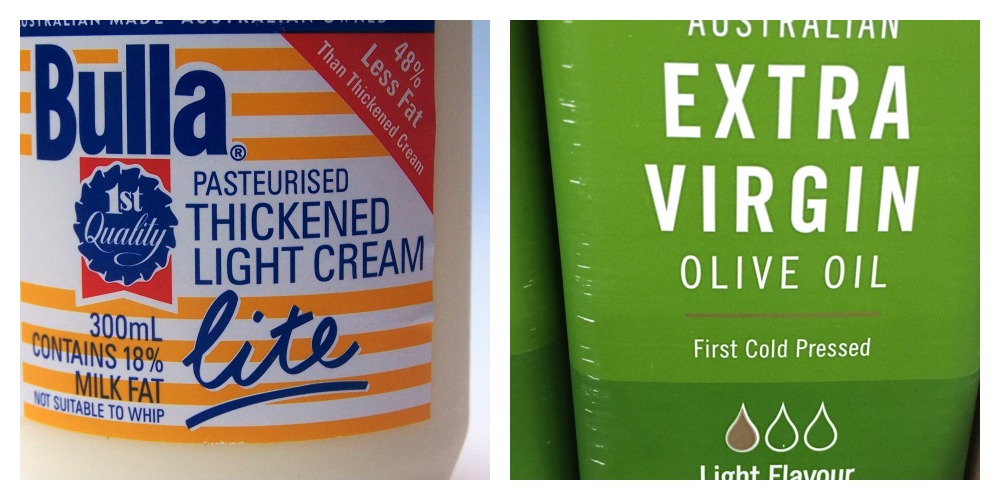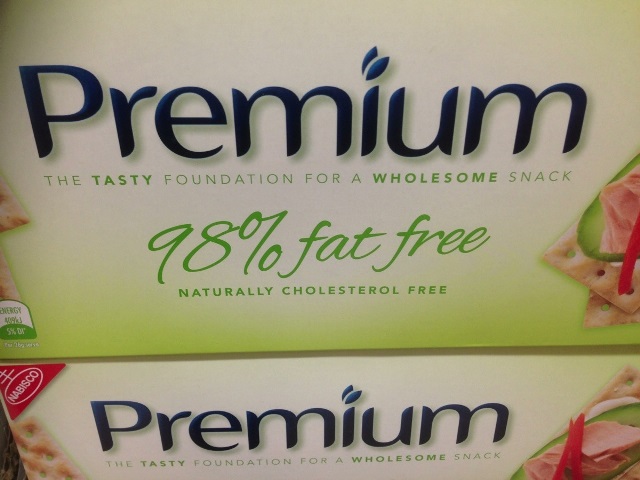5 label claims you need to be wary of

Do you check the label for fat before you buy? Or do the words “No cholesterol” or “Fat-free” persuade you that a product is healthy? Maybe they shouldn’t! Here are the 5 most dramatic claims or tags that should set alarm bells ringing when you’re pushing that trolley up and down the shopping aisles. Here’s why I’m starting a campaign against these five food claims.
1. No Cholesterol
Pay NO attention to this claim. It really is meaningless. Cholesterol from food isn’t the worry. It’s the saturated and trans fats that you need to cut back on if your blood cholesterol is too high.
You’ll spot this one on heaps of foods ranging from avocadoes to potato chips. It’s a hangover from the 1970s when high cholesterol was all the rage and was believed to set the scene for heart attack and clogged arteries.
What’s more “No cholesterol” does not mean NO FAT - which is what many falsely believe. Many foods such as oils, margarines, nuts, avocado and snack foods can be free of cholesterol but remain high in fat. All plant-derived products are free of cholesterol anyway. Only animal foods like meat, dairy and eggs have significant cholesterol. And even these are no longer a worry – since 2011, the Heart Foundation says you can eat 6 eggs a week (about one a day, up from their former limit of two a week) even if you have high cholesterol.
Examples: oils, avocados, eggs, deli meats, snack foods, sauces
2. 97% Fat-Free
This one catches a lot of people. It’s just the reverse of the usual way figures are presented. Really ”97% fat-free” means that the food contains 3 per cent fat, but saying it the other way around somehow makes it sound lower and better for you! It’s a pretty common one for attracting shoppers who are looking for weight reduction as ‘fat’ can mean fat in food as well as body fat.
Only low-fat foods with 3 per cent fat or less are supposed to make this claim. It also applies to 98% fat-free (which is really 2 per cent fat) and 99% fat-free (which is one per cent fat). See how they suddenly sound less fattening?
If you do spot a food shouting 92% or 93% fat-free, it’s not complying with the food code and should be reported to the Food Authority in your state e.g. in NSW, it’s the NSW Food Authority at http://www.foodauthority.nsw.gov.au. Look for their Contact Form or info on how to make a complaint.
Examples: milks, yoghurts, juices, savoury crackers, crispbread, instant soups, jellies, jubes and barley sugar (sugar lollies).
3. Low fat
As above, don’t be caught out by low fat – it’s not the ultimate choice for overall health. For a start, to qualify, the food must contain less than 3 per cent fat for foods (or 1.5 per cent for liquids). But the food can still have lots of refined starch or added sugar or even natural sugars (think juice) so it’s not all that healthy for you.
Other names for fats
On the Ingredient List on the back, fat can also appear as:
- vegetable oil (in snack foods and sauces)
- vegetable shortening or baker’s shortening (in muffins and cakes)
- ghee
- lard
- suet, dripping
- coconut cream
- coconut oil
- Copha
- triglycerides
Examples: milk, cottage cheese, yoghurt, dairy dessert, cereal, bread and low-fat pasta meals
4. Baked not fried
”Baked not fried” often appears on snack foods and cracker biscuits and makes them sound a lot healthier. Well, who wants to admit to buying snacks that are deep-fried? It even somehow implies that the food is low in fat (weird, I know).

For some snacks, like pretzels, this is true (i.e. they have less than 3 per cent fat) but for others, like savoury cracker snacks, it means they are lower in fat (around 25 per cent less than the usual) but not necessarily LOW in fat. They could still have as much fat as fried items so check the nutrition panel if in doubt. Remember that potato crisps have around 35 per cent fat and corn chips about 25 per cent so you want to buy lower than this. Or not eat them at all.
See this comparison between chicken-flavoured savoury crackers and chips (crisps):
| Food |
Energy, kJ |
Fat, g |
Sat fat, g |
Sodium, mg |
| Chicken Crimpy crackers, per 100 g | 1960 | 19.7 | 4.0 | 958 |
| Chicken-flavoured chips, per 100 g | 2090 | 30.5 | 14.2 | 790 |
A box of savoury crackers is just as deadly as a bag of chips - it’s salty (often more so than chips), crunchy, impossible to stop once you start nibbling, encourages thirst so you drink more. It’s a trap.
Examples: rice thins, savoury cracker biscuits, popped corn, extruded snacks
5. Light
The term ”light” or ”lite” doesn’t necessarily mean that the product is low in fat or kilojoules/Calories. See my post Light foods - do they support your weight loss efforts?

Light could refer to one of three things - a lighter texture, or a lighter colour or taste. Check what’s being ‘lightened’. It should say it on the label. For example:
- light potato crisps are thinly sliced and lightly salted (but still have the same amount of fat)
- light olive oil has a milder, softer flavour (but still has the same fat as extra-virgin olive oil)
- light beer is lower in alcohol (and has fewer kilojoules) than full-strength
- light cheese has less fat and sometimes less salt (and fewer kilojoules but you may pay a price in less taste too)
- light margarine (spread) has less fat and more water (so fewer kilojoules).
- light milk has half the fat of full-cream milk
- light cream has half the fat (18%) of regular cream (35%).
Examples: cream, sour cream, coconut milk, cow's milk, ice-creams, margarine, breakfast cereal, muffins, chocolate, sweet biscuits, olive oil, blackcurrant juice, beer, wine.
The bottom line
Anytime you spot one of these five nutrition claims on a food pack, take care. Check for yourself by reading the nutrition panel on the back to see if they’re true. If you’re looking at Baked not Fried or Light, remember it’s only in comparison to the regular product that these have LESS fat or LESS sugar or FEWER Calories. You can’t eat twice as much of them. Just be content with a small handful.









